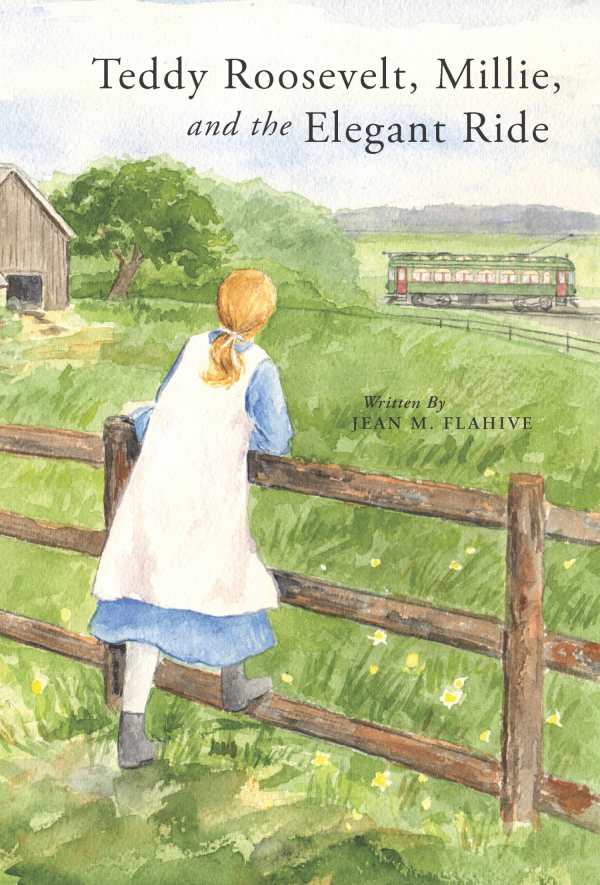
Teddy Roosevelt, Millie, and the Elegant Ride
Teddy Roosevelt, Millie, and the Elegant Ride infuses local color with an eventful coming-of-age story that’s both expressive and nostalgic.
The advent of interurban trolley cars inspires a Maine farm girl to dream of life beyond her rural town in Jean M. Flahive’s inviting historical novel, Teddy Roosevelt, Millie, and the Elegant Ride.
Ninety-six-year-old Millie visits a museum restoration of the Narcissus, a trolley that impressed her when she was young. Through flashbacks, she recalls 1911, when she first noticed tracks for the trolley being laid. Amid her chores, curiosity about electricity and a prediction by a local fortune teller that Millie would one day meet a “notable” person build quiet anticipation.
In 1914, Millie rides her first trolley. Evocative descriptions of this exciting novelty show her seeing new vistas. When Millie meets Roosevelt, she gives him sweet peas; he is portrayed as a kind man. He’s a minor if revered character within her story, though; the gift of flowers to him, which is based on a real event, is woven into the context of fictional Millie’s enthusiasm.
Years pass at a brisk pace, tracking the interurban’s development. Periodic returns to the museum delay the foreshadowed meeting and interrupt the warm immediacy of Millie’s child’s-eye view. Millie’s dream to leave home moves the plot better. The specifics are nebulous; Millie arrives at her plans through impulse, time, and experience.
Conversations with Millie’s parents fill in the background with information on women’s suffrage; Roosevelt’s Maine connection and friendship with Bill Sewall, a guide; and the workings of the trolley. A focus on the Portland-Lewiston Interurban brings the sweep of modernization home and accents a lesser-known slice of Americana. Black and white archival photographs round out the history of Maine’s interurbans.
During the First World War, details on politics and German U-boats stand apart from the main story; when the book turns to Maine’s people and history, the facts are better integrated and Millie is less of a bystander. Millie’s chance encounter with a Maine suffragist, Florence Whitehouse, reinforces how riding the interurbans plays a fateful role in shaping her worldview.
At fourteen, Millie joins a youth organization to sell Liberty Bonds on the interurbans, which combines her fascinations with travel and civic duty. Throughout, she is innocent, receptive, and determined—an aspirational figure. Her concerns place her in her era, yet she’s timeless in her thirst for learning. In her teen years, the death of her brother and romantic feelings for a family friend, Sam, add gravity to the story, though they’re sudden events. A later conversation pushes her to see that her childhood ideas can alter to include other people.
Teddy Roosevelt, Millie, and the Elegant Ride infuses local color with an eventful coming-of-age story that’s both expressive and nostalgic.
Reviewed by
Karen Rigby
Disclosure: This article is not an endorsement, but a review. The publisher of this book provided free copies of the book and paid a small fee to have their book reviewed by a professional reviewer. Foreword Reviews and Clarion Reviews make no guarantee that the publisher will receive a positive review. Foreword Magazine, Inc. is disclosing this in accordance with the Federal Trade Commission’s 16 CFR, Part 255.
